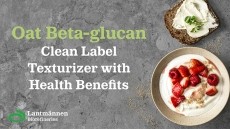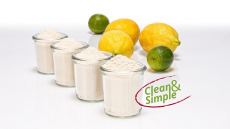Sugar beet pectin edges closer to wider use in foods
While only small amount of sugar beet pectin are required to emulsify oil-in-water mixtures, the stability of the emulsions is not as high as that observed with other food hydrocolloids.
By subjecting the ingredient to a patented (WO2006/132288 A1) “non-chemical and food acceptable process”, researchers from Japanese foods and foods ingredients company San-Ei Gen F.F.I., Inc. report the production of a new form of sugar beet pectin with enhanced emulsifying properties.
“Enhancement of sugar beet pectin using a food-friendly process involves the association of the carbohydrate chains via protein as a linker,” explained the researchers, led by Takahiro Funami.
“This provides food manufactures with a novel sugar beet pectin emulsifier with improved functionalities, contributing to the progress in the emulsion area,” they added.
The San-Ei Gen scientists, in collaboration with Glyn Phillips from Phillips Hydrocolloids Research, report their findings online in Food Hydrocolloids.
In an email correspondence with FoodNavigator, Takahiro Funami, PhD, deputy general manager of San-Ei Gen F.F.I., Inc said the modified sugar beet pectin has not yet been commercialized. “It has been proven to be effective in commercial emulsion products, particularly in beverage emulsions,” added Dr Funami.
Pectin facts
Pectin, with worldwide production estimated at 35,000 tonnes a year, is currently widely used as gelling agents in jams, confectionery, and bakery fillings, and stabilisers in yoghurts and milk drinks.
The majority of pectin used currently comes from citrus peel and apple pomace. The functionality of pectin is dictated by the chemical fine structure, and other sources of the ingredient, like sugar beet and pumpkin, have remained largely unexploited because of certain undesirable structural properties.
“The main application envisaged for sugar beet pectin in the food industry is as an emulsifier rather than as a gelling or stabilizing agent,” explained Funami and his co-workers.
Dr Funami told this website that the modified sugar beet pectin is produced using a food-friendly maturation process, without the introduction any new chemical groups and retains its clean natural label as conventional sugar beet pectin. However, the modification leads to a more robust ingredient in its performance during and after industrial processing.
Study details
The Japanese researchers sought to understand the emulsifying properties of their new pectin by subjecting it to a range of enzymes, including protease, a mixture of arabinanase and galactanase, or polygalacturonase. Protease was used to degrade the protein-like part of the molecules, polygalacturonase was used to cleave the carbohydrate backbone, while the arabinanase/galactanase mixture cleaved the lateral chains.
According to the findings, the emulsification behaviour decreased mostly following protease action, followed by the arabinanase/galactanase mixture, and finally polygalacturonase.
“The results confirm the key role of protein as the anchor for the oil droplets and identify also the contribution of the neutral lateral chains in stabilizing emulsions by forming a hydrated layer,” explained the researchers.
“Protein also aggregates, which functions as a linker for the association of the carbohydrate chains consequent to the enhancement process.”
Source: Food Hydrocolloids
Published online ahead of print, doi: 10.1016/j.foodhyd.2009.11.017
"Structural modifications of sugar beet pectin and the relationship of structure to functionality"
Authors: T. Funami, M. Nakauma, S. Ishihara, R. Tanaka, T. Inoue, G.O. Phillips
Disclaimer: This article has been updated from the original to include additional quotes from Dr Funami.





























